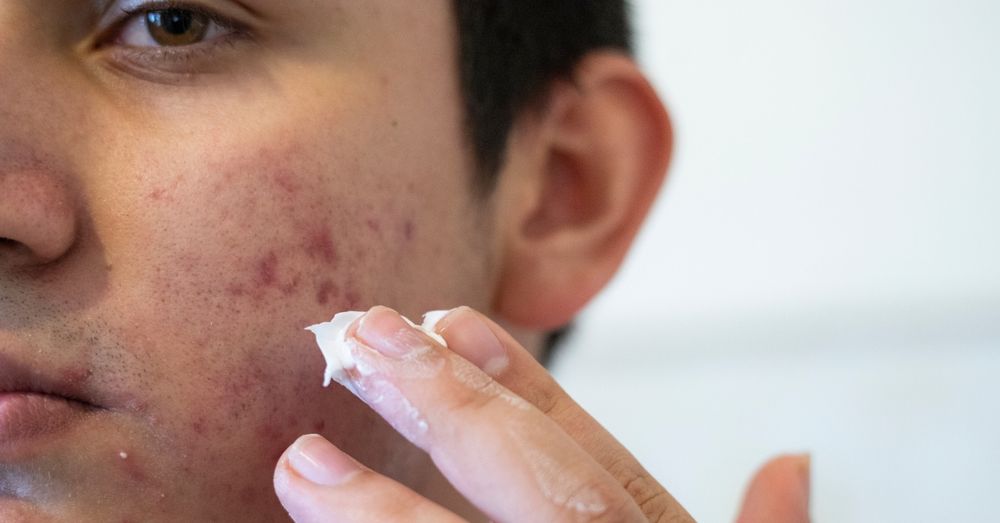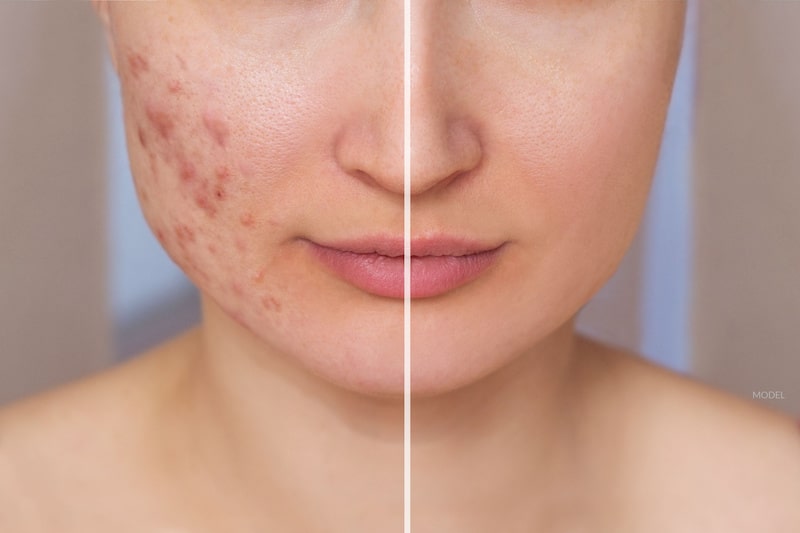Advanced Acne and Acne Scars Treatment: Bid Farewell to Acnes
Advanced Acne and Acne Scars Treatment: Bid Farewell to Acnes
Blog Article
Checking Out Skin Disease: Identifying and Treating Acne Scars for Healthier Skin
Acne scars represent a substantial worry for individuals seeking to maintain healthy skin, as they can affect both appearance and self-esteem. Understanding the different kinds of marks, from atrophic to hypertrophic, is essential for establishing ideal therapy options.
Understanding Acne Scars
Comprehending acne marks is critical for anybody that has experienced serious acne, as these marks can have an enduring effect on both physical look and psychological health. Acne scars develop when the skin undergoes inflammatory reactions during active acne sores. The extent of scarring is usually affected by variables such as the kind of acne, its duration, and individual skin qualities.
The body's all-natural recovery procedure can lead to either atrophic scars, which appear as anxieties in the skin, or hypertrophic scars, which are increased and arise from overflow of collagen. Additionally, the emotional toll of acne marks ought to not be taken too lightly; lots of people report sensations of embarrassment, anxiousness, and lowered self-esteem. This psychological problem can impact social communications and general high quality of life.
Addressing acne marks calls for a detailed understanding of their development and impact. Awareness of the possibility for long-term consequences connected with neglected scars can encourage individuals to look for appropriate treatments. Early treatment and effective monitoring methods can dramatically improve skin look and enhance psychological resilience, emphasizing the relevance of recognizing the complexities surrounding acne marks.
Sorts Of Acne Marks
Acne scars can be categorized right into unique types, each showing special attributes and needing specific therapy techniques. The primary kinds of acne scars include atrophic, hypertrophic, and keloid marks.

Hypertrophic scars, on the other hand, are raised over the skin level and are the result of extreme collagen manufacturing throughout the recovery procedure. They commonly remain within the limits of the initial acne sore. Keloid marks are comparable yet expand past the original injury website, creating bigger, elevated areas that can be itchy or painful.
Comprehending these kinds of scars is necessary for picking appropriate treatment options. Different scars may respond far better to specific therapies, such as laser therapies, fillers, or medical treatments, stressing the relevance of a customized method to acne mark monitoring.
Determining Your Scars
When assessing the appearance of your skin, it is essential to accurately identify the kind of scars existing, as this will educate one of the most efficient therapy approach. Acne marks usually fall under 2 classifications: atrophic and hypertrophic marks. Atrophic marks, which are one of the most common, appear as clinical depressions or impressions on the skin. These can additionally be classified right into ice-pick scars, boxcar marks, and rolling marks, each exhibiting distinct features and needing different approaches for analysis.
Hypertrophic marks, on the other hand, are elevated and happen because of excessive collagen manufacturing during the healing procedure. Acknowledging the details functions of your scars-- such as texture, size, and deepness-- is necessary for proper identification. In addition, consider the distribution of marks throughout your skin, as this can indicate the extent and duration of the acne condition.
Involving with a skin doctor can provide useful insights into the nature of your marks, assisting in the differentiation between various types. A detailed understanding of your scars will eventually cause an extra tailored and effective treatment plan, making certain a more clear and healthier complexion.
Treatment Alternatives Available
Determining the certain kind of acne marks present on your skin lays the groundwork for checking out effective treatment options. Common types of acne scars include atrophic (clinically depressed), hypertrophic (increased), and post-inflammatory erythema.
For atrophic marks, alternatives such as chemical peels, microneedling, and laser resurfacing are widely made use of. Chemical peels off make use of acids to get rid of the outer layer of skin, advertising new cell development. Microneedling includes little needles that develop micro-injuries, stimulating collagen manufacturing. Laser resurfacing targets harmed skin cells, boosting appearance and read this tone.
Hypertrophic find more information scars can be treated with corticosteroid injections to flatten the scar or laser treatment to lower soreness and improve appearance. acne treatment for sensitive skin. Silicone gel sheets and pressure dressings may also aid in taking care of increased scars
Additionally, facial fillers can briefly fill out anxieties from atrophic scars, while medical excision might be appropriate for severe cases. Each therapy alternative has its advantages and considerations, making it important to speak with a skin doctor. They can give individualized suggestions based upon the type and extent of your scars, as well as your skin kind and general health.
Tips for Avoidance
Effective avoidance methods can substantially decrease the chance of establishing acne marks. The first step is to maintain a regular skincare regimen that includes mild cleansing, peeling, and hydrating. Using non-comedogenic items aids stop clogged pores, which can worsen acne. Additionally, integrating topical treatments consisting of salicylic acid or benzoyl peroxide can successfully handle breakouts and lessen swelling.
Avoiding the desire to select or pop acne lesions is vital, as this can lead to deeper skin damage and increase the danger of scarring. Rather, think about making use of a cold compress or over the counter therapies to lower swelling and inflammation.
Sun defense is an additional vital element of avoidance; ultraviolet (UV) rays can darken scars and impede the recovery procedure. Using a broad-spectrum sun block with at the very least SPF 30 daily can protect the skin and promote even healing.
Lastly, keeping a balanced diet regimen rich in antioxidants, minerals, and vitamins supports skin wellness and recovery. Staying moisturized and managing stress and anxiety levels can likewise play a considerable role in minimizing acne flare-ups. By implementing these methods, people can considerably minimize their chances of creating acne scars.

Final Thought
In final thought, understanding and identifying acne scars is essential for reliable therapy and attaining healthier skin. Various kinds of acne marks, including atrophic and hypertrophic scars, necessitate specific treatments tailored to individual demands.
The body's Get More Info all-natural healing procedure can result in either atrophic marks, which appear as anxieties in the skin, or hypertrophic marks, which are elevated and result from overproduction of collagen. They are further separated into 3 subtypes: ice pick scars, boxcar marks, and rolling scars. Acne marks normally fall right into two groups: hypertrophic and atrophic scars. These can better be categorized into ice-pick scars, boxcar marks, and rolling scars, each exhibiting distinctive qualities and requiring various approaches for analysis.
Various kinds of acne scars, including atrophic and hypertrophic marks, necessitate details interventions customized to individual demands.
Report this page